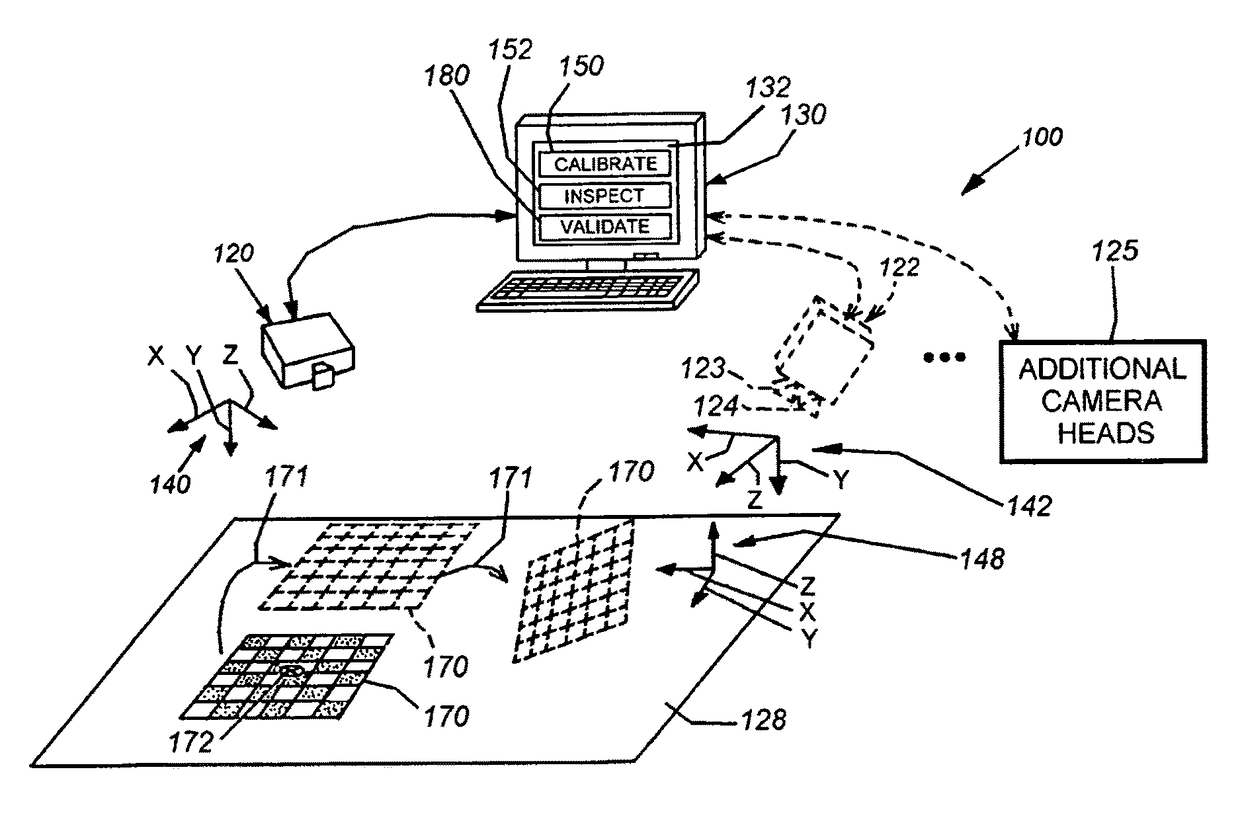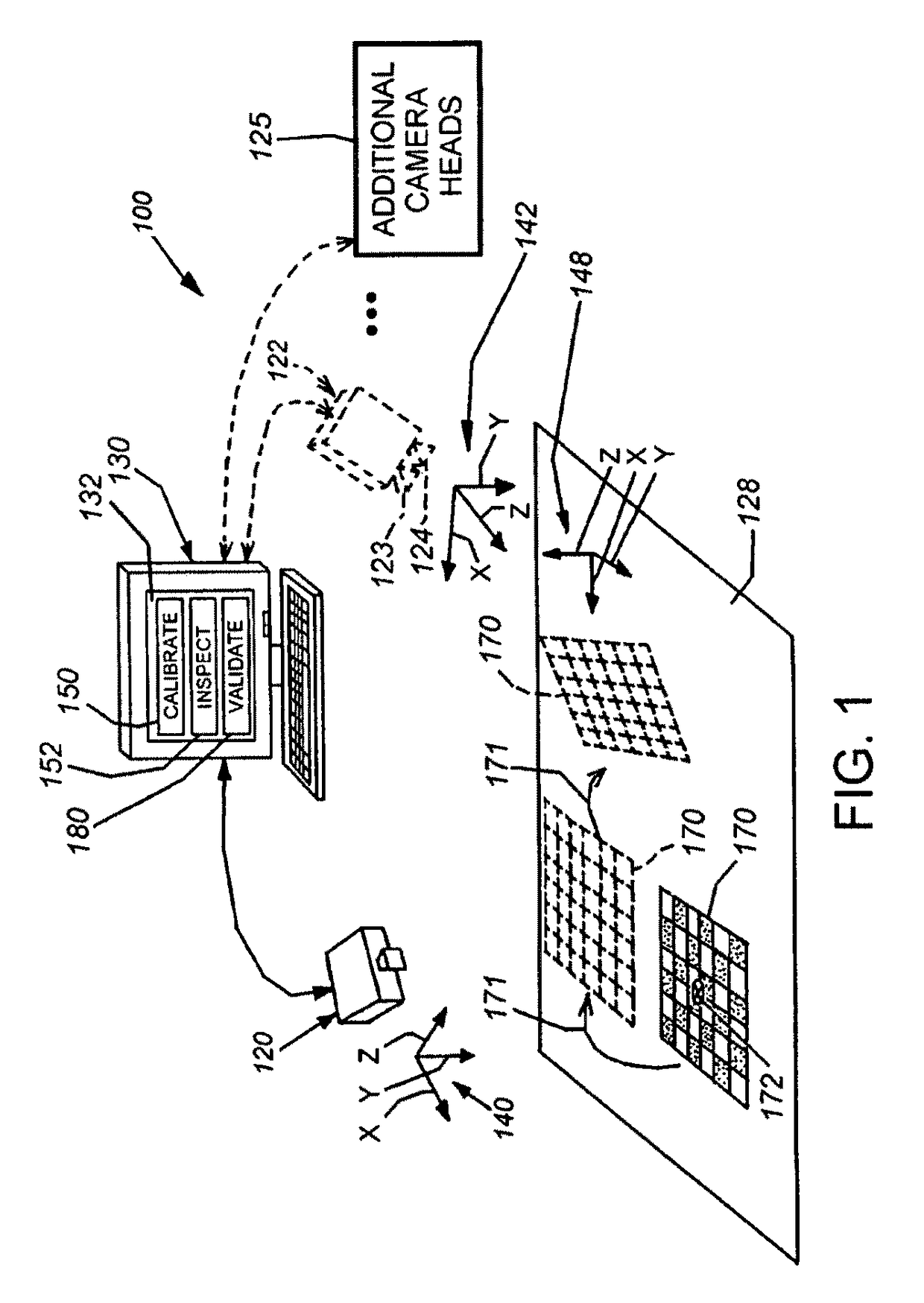System and method for validating camera calibration in a vision system
a technology of vision system and camera, applied in the field of vision system calibration, can solve the problems of affecting and difficult to trace the root cause of application deterioration performance, so as to reduce recalibration time and overhead, and validate the accuracy of camera calibration. the effect of fast and straightforward system and method
- Summary
- Abstract
- Description
- Claims
- Application Information
AI Technical Summary
Benefits of technology
Problems solved by technology
Method used
Image
Examples
Embodiment Construction
[0022]A. System Overview and Calibration
[0023]FIG. 1 depicts a typical arrangement for a vision system 100 for determining the two-dimensional (2D) or three-dimensional (3D) alignment, or pose, of a viewed scene that can include one or more runtime objects to be inspected, aligned, acted upon by a robot manipulator, or any other operation that is controlled or assisted by machine vision processes. The system can be calibrated and validated according to an illustrative embodiment of this invention.
[0024]In general, the system 100 can be any vision system arrangement containing at least one camera having the object-containing scene 128 within its field of view. The camera or sensor can comprise a 2D camera 120 as shown, or optionally, a 3D camera 122 (shown in dashed-line phantom). The 3D camera in this example is a stereo camera head that generates depth images of a scene using optical triangulation between two discrete cameras 123, 124 within a stereo camera head (122), separated by...
PUM
 Login to View More
Login to View More Abstract
Description
Claims
Application Information
 Login to View More
Login to View More - R&D
- Intellectual Property
- Life Sciences
- Materials
- Tech Scout
- Unparalleled Data Quality
- Higher Quality Content
- 60% Fewer Hallucinations
Browse by: Latest US Patents, China's latest patents, Technical Efficacy Thesaurus, Application Domain, Technology Topic, Popular Technical Reports.
© 2025 PatSnap. All rights reserved.Legal|Privacy policy|Modern Slavery Act Transparency Statement|Sitemap|About US| Contact US: help@patsnap.com



